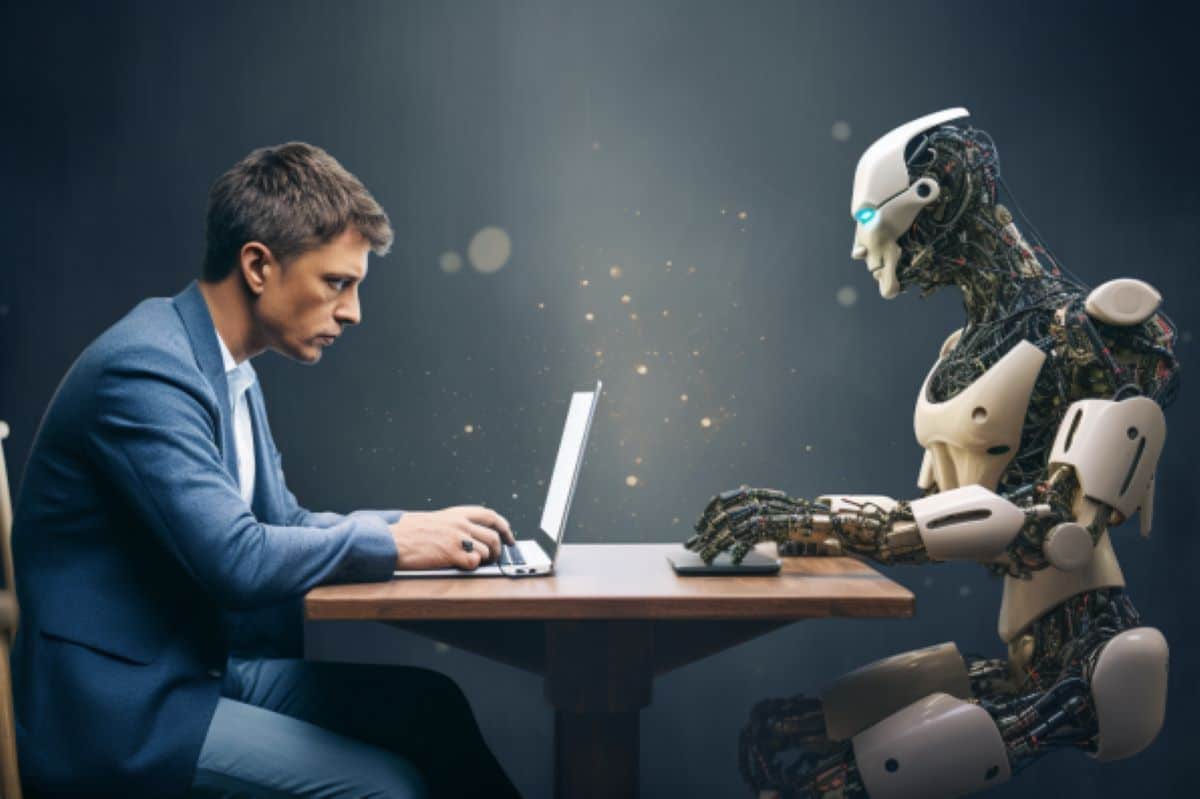Introduction:
It’s no secret that the world of work is rapidly changing as technology continues to evolve. Today, machines and artificial intelligence are actively taking over jobs that were once solely meant for humans. Whether it’s automated customer service, self-driving cars, or robotic manufacturing, machines are replacing humans at an alarming rate. This raises the question: Will humans become obsolete as AI continues to accelerate? This blog delves into the human vs AI debate, examines the current state of affairs in the workplace, and discusses how humans can coexist with AI in the future.
The State of AI in Jobs
Artificial intelligence is coming at a rapid pace, and there is no sign of slowing down any time soon. According to a report by McKinsey, half of all current work activities could be automated using already existing technologies, accounting for $16 trillion in wages worldwide. Additionally, robots are being increasingly integrated into sectors such as manufacturing, healthcare, finance, and retail. Hence, it’s not hard to predict that the age of automation is quickly approaching. However, not all jobs are easily replaceable by AI. Jobs that require analytical, creative, or interpersonal skills that are difficult to replicate in a machine are more likely to remain safe.
The Advantages of AI in Workplaces
Artificial Intelligence has transformed various industries by drastically increasing efficiency and accuracy of operations. For instance, AI-powered call centers can provide 24/7 customer support without the need for human agents, reducing response times for customers, and increasing productivity levels for businesses. Similarly, self-driving cars have relieved the need for human drivers, reducing accidents, traffic congestion, and increasing safety on roads. AI can perform repetitive tasks more effectively and faster than humans, allowing for more time towards tasks that require cognitive decision-making that is better handled by humans.
The Limitations of AI in the Workplace
Although AI has made remarkable strides in recent years, there are limitations in its capabilities. For instance, AI cannot be perfect at all tasks. They can only learn what is designed or coded for them. They are not capable of problem-solving, reasoning and ethical considerations outside of its programming or training. AI systems rarely display creativity or ability to break rules existing in a protocol or program. While machines can accomplish more parts of a job, they are still not capable of performing the whole spectrum of roles assigned to humans. Additionally, the creation of AI-backed tools requires extensive planning and programming, which comes with high installation and maintenance costs.
The Future of Human vs AI in Jobs
The interactions between humans and AI are much more necessary than head-to-head competitions, as both parties have strengths and limitations. In several fields where AI integration is inevitable, emerging roles may involve designing, legal compliance, training, and oversight. It is important to invest in upskilling and reskilling the workforce in areas where advancement occurs. The government has a role to play in creating polices to protect employment, ensuring the upskilling of workers, standardization of compliance norms in usage of AI in industries and ensure that workers benefit from a distributed economy.
Coexistence of AI and Humanity in the Future of Work
In conclusion, the rise of AI in workplaces represents numerous opportunities that companies and industries must embrace. As companies continue developing AI robots and interacting with the new dependent workforce, cooperation between humans and machines will become a critical factor for successful functioning in the future. AI will take on the more mundane and repeatable jobs and free humans to focus more on creative tasks. It is a time to promote collaboration between AI and human workers to break new ground in economic efficiency and innovation. The future will have a digitally driven workforce, but human touch will determine who survives and thrives in a fast conversion. Preparing for the integration of AI is critical to ensure both business and human success in the future.
 Conclusion:
Conclusion:
The debate between humans and AI will continue to weigh heavily on the future of work as the world continues to evolve and technology progresses. The advantages of AI in workplaces are undeniable, but it’s important to recognize the limitations inherent in AI. While it’s tempting to see AI as a competitor to human workers, the key to the future lies in finding a way for humans and robots to collaborate effectively. With a shared vision for work, developing the necessary skills and expertise, embracing changes, and investing in the necessary research and infrastructure, the human workforce can successfully secure its rightful place in the new economy.